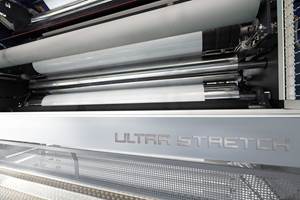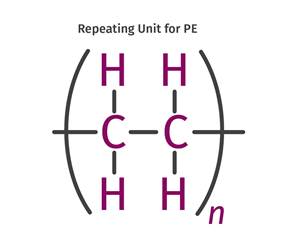Flat or Slipping
Prices of most commodity resins were flat or slipping downhill in February and March.
Prices of most commodity resins were flat or slipping downhill in February and March. Polypropylene posted what may be only a temporary gain. Only PET prices appear firm and trending upward.
PE prices down
Polyethylene resin tabs dropped 2¢/lb in early March, which brought the total slump in prices since December to 14¢/lb. There was also talk of another 2¢ drop in March, which would cut in half the price inflation in the second half of 2005. Still, suppliers have not rescinded their December 5¢ increases, but only delayed them again, to April 1.
Meanwhile, international prices at the London Metal Exchange were falling last month. LME’s April short-term futures contract for blown film butene LLDPE was at 51¢/lb, down from 58.5¢ for March and 55.6¢/lb for February.
Contributing factors: With falling energy and feedstock prices, PE resin tabs could soon drop another 4¢ to 6¢/lb, lopping a total of 20¢ to 22¢ off last year’s hikes. Says Bill Bowie, COO of purchasing consultant Resin Technology, Inc. (RTi) in Fort Worth, Texas, “We have seen lower resin orders from PE film processors. One reason is the large volume of imported film and bags. Processors are buying only what they need in the expectation that prices will go down.”
Adds a major PE supplier, “Our margins are still good because of lower feedstock costs. Ethylene contract prices have dropped to 50¢/lb from the 56.5¢ in November-December. Demand is fairly good, and we hope for 5% to 6% growth over last year. With no new capacity coming on stream, there is no likelihood of an oversupplied market.”
PP prices up—for now
Polypropylene resin tabs rose 4¢ to 6¢/lb from February to March, reflecting partial implementation of 12¢ to 16¢/lb hikes slated for those two months. LME’s April short-term futures contract for g-p injection grade dropped to 45.6¢/lb from 54.9¢ for March and 52.2¢ for February.
Contributing factors: Some industry sources think recent increases could be short-lived. Says RTi’s Bowie, “Spot prices at some accounts have fallen about 4¢/lb. Within the next 30 days, resin producers are likely to lose the average 4.5¢/lb they gained last quarter. Demand has slowed and deals are being made on the spot market to move material quickly.”
Propylene monomer contract prices rose 4.5¢/lb in February, but are expected to hold even now because crude oil prices have dropped.
PET prices increase
Bottle-grade PET prices moved up 3¢/lb in February, in partial implementation of 5¢ hikes early in the first quarter. Most suppliers also came out with a 4¢/lb increase for March 1, and some sources expect prices to move up 2¢ more.
Contributing factors: “Prices of raw materials like paraxylene and ethylene glycol rose over 5¢/lb in January and February. While those prices slipped back some in March, margins remained unfavorable for resin suppliers,” says one industry analyst.
Suppliers say resin demand is pretty good. According to one, “Domestic demand is likely to be up 6% to 7% over last year, although we lost about 3% of that to Asian imports.”
Of more concern to suppliers is looming resin oversupply with over 1.1 billion lb of new capacity coming on stream by early 2007. It will start with 200 million lb from Wellman in June. Prices are apt to start dropping by the end of June and suppliers foresee eight to 12 months of excess supply.
PVC remains soft
PVC resin prices dropped 1.5¢/lb in February and were expected to lose another 1.5¢ to 2¢ in March. Suppliers delayed their 2¢/lb hike from January to April 1, but they are hoping the mere threat of an increase will halt the price slide.
Contributing factors: The usual spring pick-up in demand hasn’t kicked in yet. Pipe producers’ inventories are up. Window orders are mixed, and siding orders are soft for this time of year. Ethylene feedstock costs are falling.
PS hike deferred
Polystyrene contract prices held even in March. Tabs for plentiful offspec resin dropped 3¢/lb or more. Producers’ 6¢ hike for Feb. 1 was trimmed to 5¢ and delayed to April 1. It is probably dead, some suppliers concede.
Contributing factors: January’s PS demand was 14% ahead of December’s, but demand in February and March was only so-so. High prices have hurt—some cup makers switched to paper, and lids moved to PET.
Contract prices for benzene feedstock dropped from $2.86/gal in February to $2.73 in March, and futures were as low as $2.60 for May.
| Market Prices Effective Mid-Mar A |
|
|
KEY: Colored areas indicate pricing activity. An arrow () indicates direction of price change. aTruckload, unless otherwise specified. bUnfilled, natural color, unless otherwise specified. cBased on typical or average density. dNot applicable. eNovolac and anhydride grades for coils, bushings, transformers. fNovolac and anhydride grades for resisitors, capacitors, diodes. gIn quantities of 20,000 lb. h19,800-lb load. jLME 30-day futures contract for lots of 54,564 lb.. |
Related Content
The Fundamentals of Polyethylene – Part 1: The Basics
You would think we’d know all there is to know about a material that was commercialized 80 years ago. Not so for polyethylene. Let’s start by brushing up on the basics.
Read MorePrices Drop for All Five Commodity Resins
While PE price reductions were not as apparent, they too were following the year-end price trajectory of PP, PS, PVC and PET.
Read MoreThe Fundamentals of Polyethylene – Part 2: Density and Molecular Weight
PE properties can be adjusted either by changing the molecular weight or by altering the density. While this increases the possible combinations of properties, it also requires that the specification for the material be precise.
Read MoreDelivering Increased Benefits to Greenhouse Films
Baystar's Borstar technology is helping customers deliver better, more reliable production methods to greenhouse agriculture.
Read MoreRead Next
Lead the Conversation, Change the Conversation
Coverage of single-use plastics can be both misleading and demoralizing. Here are 10 tips for changing the perception of the plastics industry at your company and in your community.
Read MoreBeyond Prototypes: 8 Ways the Plastics Industry Is Using 3D Printing
Plastics processors are finding applications for 3D printing around the plant and across the supply chain. Here are 8 examples to look for at NPE2024.
Read More









